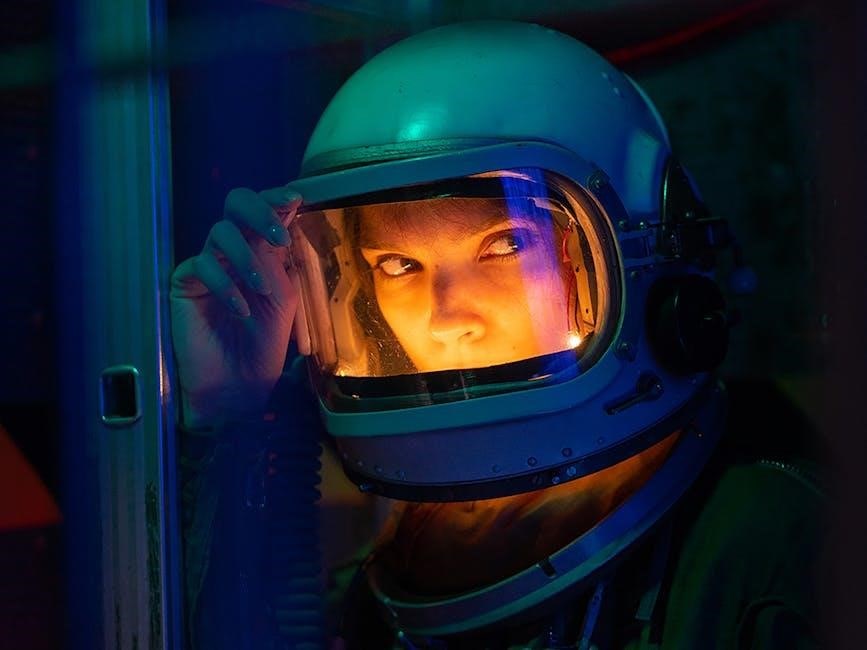first interstellar guide
Category : Guide
Interstellar travel, a cornerstone of science fiction, now beckons as a tangible, albeit distant, possibility. This guide will navigate the complexities and potential realities of voyaging to other stars.

Defining Interstellar Space
Interstellar space begins beyond our Sun’s heliosphere, a vast bubble shaped by the solar wind. It’s the realm between star systems, a region filled with sparse gas and dust.
The Region Beyond the Heliosphere
The heliosphere, a protective bubble created by our Sun’s solar wind, marks the boundary to interstellar space. Beyond lies a realm where the influence of other stars dominates. The region beyond the heliosphere is characterized by extremely low densities of particles, though cosmic rays and magnetic fields permeate this vast expanse. It’s a frontier for exploration, a gateway to understanding the galactic environment and the potential for interstellar travel. Voyager’s journey provides valuable data about this transition zone. This data helps to understand the interaction between our solar system and the interstellar medium. Navigating and understanding this region is crucial for planning future interstellar missions and ensuring the safety of spacecraft venturing into the unknown. This is a zone scientists need to study more.
Challenges of Interstellar Travel
Interstellar travel presents formidable hurdles, requiring solutions to vast distances, extreme energy needs, communication delays, and other human-scale issues. This guide will explore these problems.
Vast Distances and Travel Time
The sheer scale of interstellar space poses a profound challenge. Stars are separated by trillions of kilometers, rendering travel times immense, even at significant fractions of light speed. A journey to even the closest star system, Proxima Centauri, would take decades, if not centuries, using current or near-future technologies.
Such prolonged voyages necessitate innovative solutions for crew survival, including advanced life support systems, radiation shielding, and strategies for mitigating the psychological effects of isolation. The immense timescales also demand consideration of multi-generational travel, where the original crew would not live to see the destination. Overcoming these temporal and spatial barriers is paramount for realizing interstellar ambitions, as this guide will highlight.
Furthermore, communication delays, inherent to the speed of light, add another layer of complexity. Real-time interaction with Earth would be impossible, requiring autonomous decision-making capabilities for the spacecraft and its crew. This guide highlights the issues.
Energy Requirements and Propulsion
Achieving interstellar velocities demands colossal amounts of energy, far exceeding the capabilities of conventional propulsion systems. Chemical rockets, for instance, lack the necessary energy density for such ambitious journeys. Therefore, revolutionary propulsion methods are essential for interstellar travel.
This guide explores potential solutions, including advanced technologies like fusion propulsion, which harnesses the energy released from nuclear fusion reactions. Antimatter propulsion, although theoretically promising, faces significant challenges in production and storage. Beam-powered propulsion, using lasers or particle beams to propel spacecraft, also holds potential but requires substantial infrastructure.
The development of efficient energy sources and innovative propulsion systems is critical for overcoming the energy barrier. Reaching even a fraction of the speed of light requires harnessing energy on a scale currently unimaginable, demanding breakthroughs in physics and engineering. The future for this guide is looking bright.
Communication Delays
The vast distances separating stars introduce significant communication delays, posing unique challenges for interstellar missions. Even traveling at the speed of light, signals would take years, or even decades, to reach their destination and return. This delay impacts real-time control and decision-making, requiring autonomous systems and pre-programmed instructions.
This guide will explore strategies for mitigating these challenges, including advanced communication technologies and robust autonomous systems. Artificial intelligence and machine learning can enable spacecraft to make independent decisions, reducing reliance on Earth-based commands. Compression techniques and optimized communication protocols can also improve data transmission efficiency.
Acknowledging the inherent communication delays is crucial for mission planning. Interstellar explorers must accept limited real-time interaction with Earth, relying on their own resourcefulness and onboard intelligence. This requires a fundamental shift in mission control philosophy, embracing autonomy and adaptability, as stated in this guide.

Potential Methods of Interstellar Travel
This guide explores various propulsion systems, from solar sails harnessing light to theoretical advanced technologies. Overcoming the vast distances necessitates innovative approaches for faster interstellar journeys.
Gravity Assists
This guide recognizes the importance of gravity assists, a technique utilizing the gravitational pull of celestial bodies to alter a spacecraft’s speed and trajectory. Jool, in Kerbol, is perfect for escaping, depending on modules.
By strategically approaching planets or moons, spacecraft can gain momentum without expending additional fuel, making it an invaluable tool for interstellar missions.
The Voyager probes, pioneers of space exploration, famously employed gravity assists to reach the outer solar system. This method allows spacecraft to “steal” a small amount of energy from the planet’s orbit around the Sun. The spacecraft gains kinetic energy and thus speed, while the planet loses an equal amount of kinetic energy.
Careful planning and precise execution are crucial for successful gravity assists, requiring detailed knowledge of planetary positions and trajectories. Mastering this technique is essential to reduce travel time and fuel consumption for long-duration interstellar voyages.
Solar Sails and Light Sails
This guide explores solar sails and light sails as potential propulsion methods, harnessing the power of photons to propel spacecraft across interstellar distances. Solar sails utilize sunlight pressure, while light sails employ powerful lasers to generate thrust. Light sails, solar sails are another way to get to the stars. Chemical rockets just dont have the energy density to do it.
These methods offer continuous acceleration, albeit at a slow pace, potentially reaching significant fractions of the speed of light over extended periods. Laser beams, composed of particles of light called photons, are the focus of most studies on beam riders for interstellar travel.
The effectiveness of solar sails diminishes with distance from the Sun, necessitating large sail areas and lightweight materials. Light sails, powered by external laser arrays, offer greater control and acceleration, but require substantial infrastructure and energy resources. These technologies promise efficient and sustainable interstellar travel.
Advanced Propulsion Systems (Theoretical)
This guide delves into theoretical advanced propulsion systems, pushing the boundaries of known physics for interstellar travel. These concepts, while speculative, offer glimpses into potential future technologies. The document discusses research into slowing and potentially exceeding the speed of light.
Wormhole travel, involving shortcuts through spacetime, remains a captivating possibility, but requires exotic matter with negative mass-energy density. Interstellar travel is one of the most frustrating topics in all of astrophysics.
Fusion propulsion, harnessing nuclear fusion reactions, offers high energy density and exhaust velocities, but faces significant engineering challenges. Creation of not only sentient robots, but a hybrid human-machine, homo machinus, which can live for thousands of years, be sentient and with human mind/soul, yet be able to tolerate extreme other environments.
Antimatter propulsion, utilizing matter-antimatter annihilation, presents the ultimate energy source, but antimatter production and storage remain formidable hurdles. These advanced concepts hold the promise of faster and more efficient interstellar travel, pending technological breakthroughs.

Human Factors in Interstellar Travel
Interstellar travel presents profound challenges to human health and psychology, a crucial aspect of this guide. Prolonged exposure to microgravity necessitates countermeasures to combat bone loss and muscle atrophy. Creation of not only sentient robots, but a hybrid human-machine, homo machinus, which can live for thousands of years, be sentient and with human mind/soul, yet be able to tolerate extreme other environments.
Radiation shielding becomes paramount, given the dangers of cosmic rays and solar flares. Psychological well-being during extended isolation requires careful consideration, with strategies for maintaining crew cohesion and mental health. Interstellar travel is one of the most frustrating topics in all of astrophysics.
Ethical considerations regarding long-duration missions, resource allocation, and potential contact with extraterrestrial life demand thorough examination. The document discusses research into slowing and potentially exceeding the speed of light.
Adapting humans, or perhaps creating hybrid human-machine entities, to withstand interstellar conditions represents a significant frontier in space exploration, making human factors central to interstellar mission design.

Interstellar Travel in Science Fiction
Interstellar travel has long captivated the imagination, serving as a staple of science fiction. This guide would be incomplete without acknowledging its influence. From wormhole travel across the universe and supergiant black holes are just some of the wonders seen in the film Interstellar.
Notable examples include laser-powered storylines, narratives explore the possibilities and perils of journeys between stars. The concept of interstellar voyages has inspired countless books, films, and games, shaping public perception and fueling scientific inquiry. Interstellar Travel is one of the corner stones of Far Lands, so Id thought id make a guide-ish page on Interstellar travel.
Science fiction often grapples with the ethical, social, and technological implications of interstellar exploration, providing thought-provoking scenarios for consideration. While often fantastical, these fictional depictions can inspire innovative solutions and raise awareness of the challenges involved. Outside his day job at NASA, Johnson also writes nonfiction and science fiction books for popular audiences, many of which envision future interstellar voyages. Interstellar travel is one of the most frustrating topics in all of astrophysics.
Thus, science fiction serves as both a cultural reflection and a creative catalyst for the pursuit of interstellar travel.
Resources for Further Exploration
To delve deeper into interstellar travel, explore the suggested books, articles, and NASA resources; These materials offer valuable insights and diverse perspectives for those eager to learn more about space.
Books and Guides on Interstellar Travel
Embark on your interstellar journey with curated books and guides. “Interstellar Travel: An Astronomer’s Guide” explores astronomical challenges. “The Starflight Handbook” serves as a pioneer’s companion. Les Johnson’s “A Traveler’s Guide to the Stars” envisions future voyages. Seek knowledge from Eugene F. Mallove’s “Guide to Interstellar Travel”.
These resources cover everything from theoretical propulsion systems to the realities of deep-space communication delays. Explore interstellar travel through diverse lenses. Discover insights into gravity assists and the vastness of space. These guides offer a comprehensive understanding. They discuss the science behind making interstellar dreams a reality.
From technological feasibility to the human factors involved. These books offer a glimpse into the future of space exploration. Whether you’re a seasoned scientist or a curious explorer, there’s something for everyone in these essential reads.
NASA Resources
Delve into NASA’s wealth of resources for insights into interstellar travel. NASA.gov offers news, images, and videos from space exploration. Discover pioneering research and scientific discoveries.
Explore aeronautics advancements relevant to interstellar concepts. Gain access to publications and reports on advanced propulsion systems. Examine materials science crucial for spacecraft construction. NASA provides data on radiation shielding and life support.
Learn about communication technologies for interstellar distances. Discover how NASA addresses the challenges of long-duration spaceflight. Explore the human factors vital for interstellar missions. Investigate research on psychological and physiological effects. Access educational resources on interstellar concepts.
NASA’s archives reveal past and present research. Connect with experts and projects shaping the future. These resources are vital for understanding. Explore the complexities and possibilities. NASA is pushing the boundaries of interstellar exploration.
